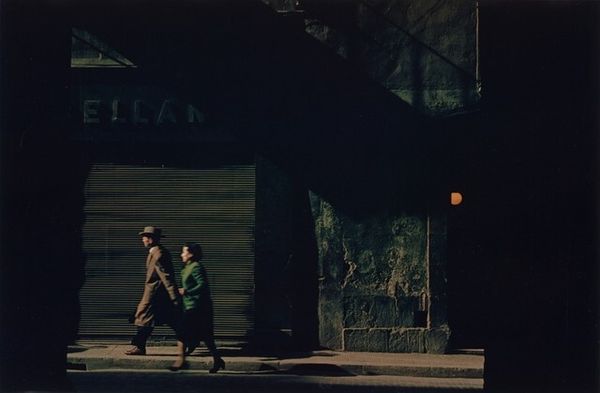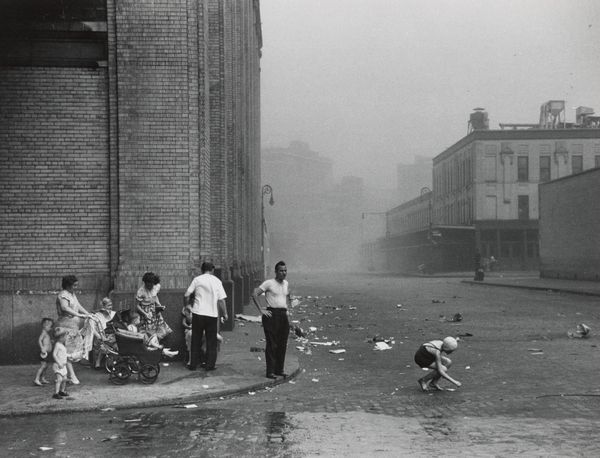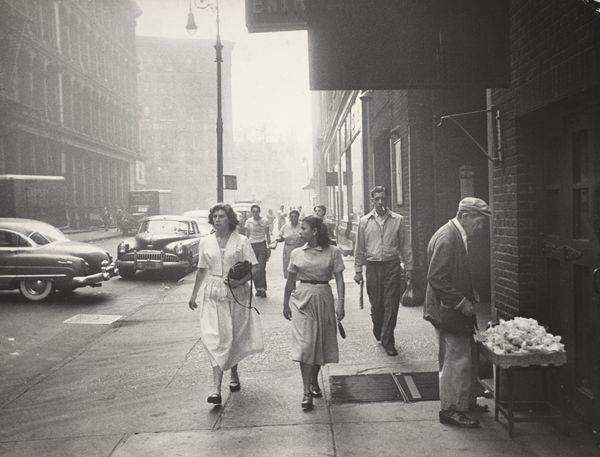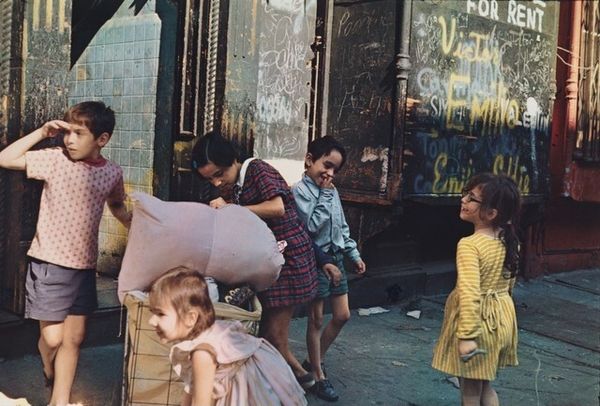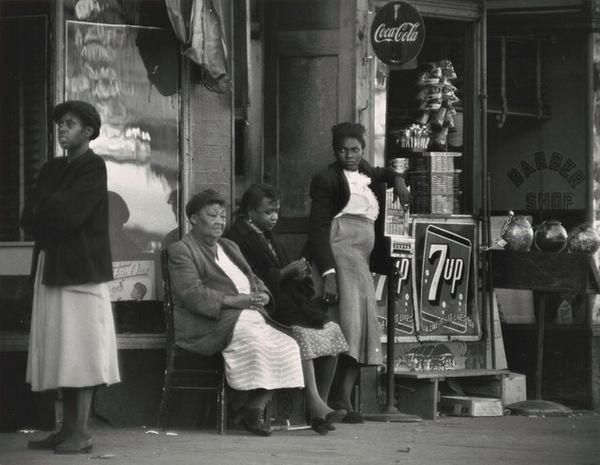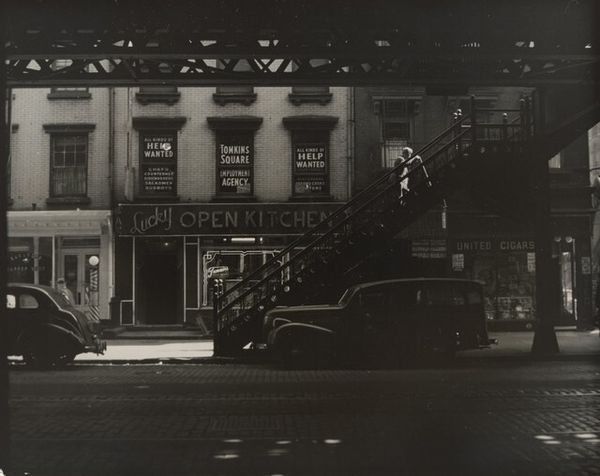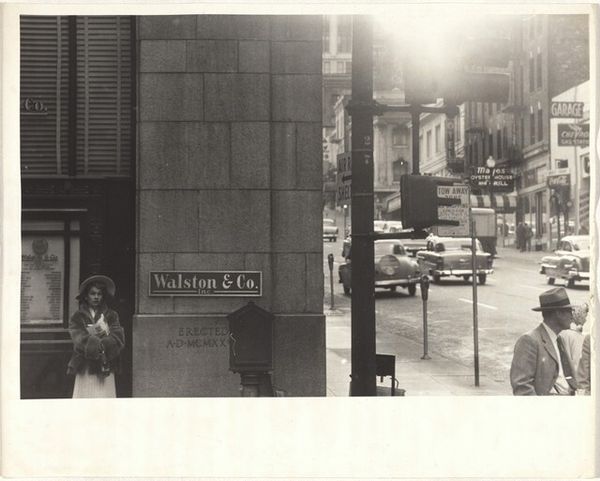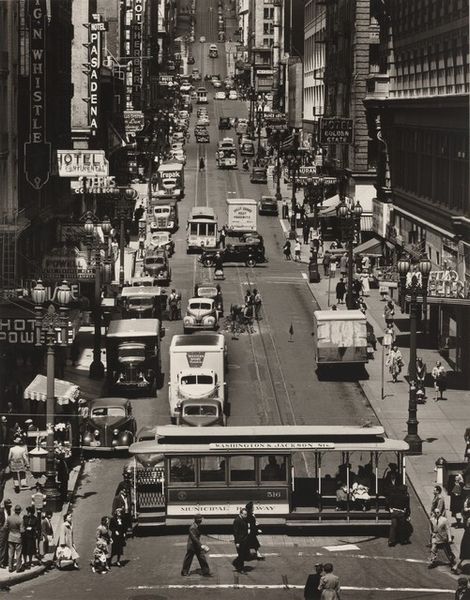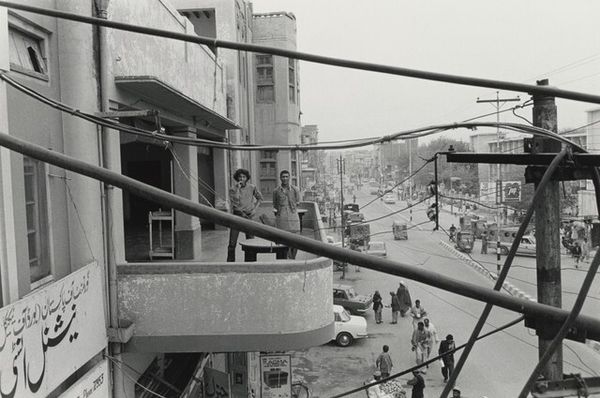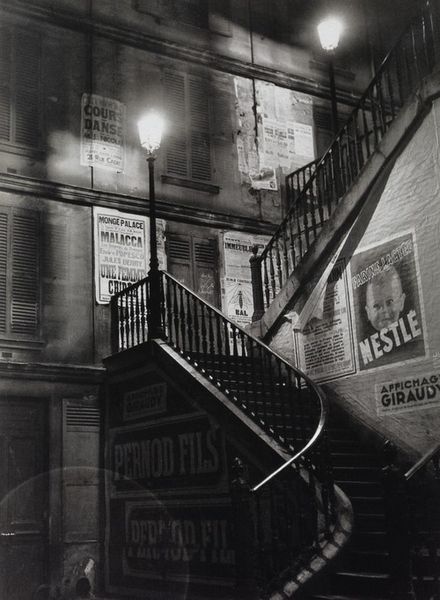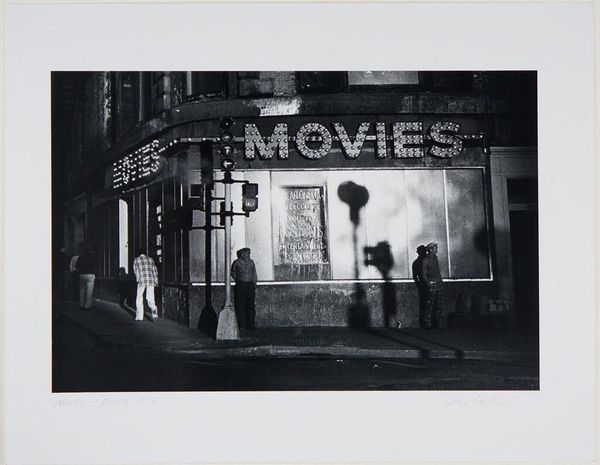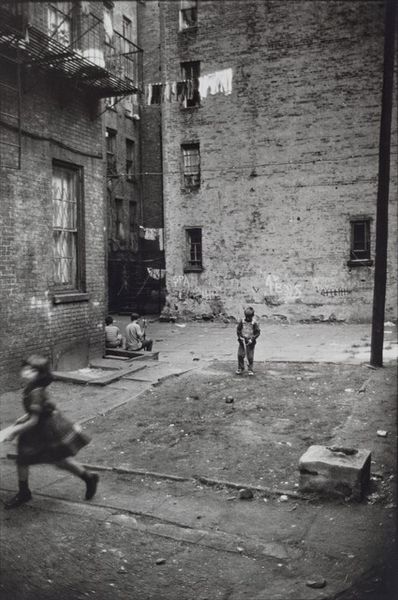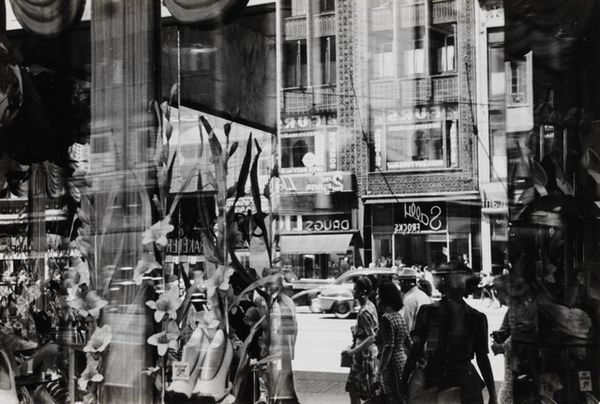
photography, gelatin-silver-print
#
landscape
#
street-photography
#
photography
#
gelatin-silver-print
#
cityscape
#
realism
Dimensions: overall (image): 15.08 x 22.9 cm (5 15/16 x 9 in.) sheet: 20.32 x 25.4 cm (8 x 10 in.) mat: 35.56 x 45.72 cm (14 x 18 in.)
Copyright: National Gallery of Art: CC0 1.0
Curator: Harry Callahan captured this intriguing street scene, entitled "Providence," in 1968, using a gelatin silver print. What's your first impression? Editor: Claustrophobic, yet… hopeful? The narrow street and converging buildings create a sense of confinement, but the burst of birds taking flight at the end of the street draws my eye and suggests an escape. Curator: That feeling of compression certainly speaks to the dense urban environments many American cities grappled with during that era, especially in older industrial centers. Callahan repeatedly photographed cityscapes like this and the built environment, highlighting societal structures and class dynamics through visual records of marginalized environments. Editor: And these streetscapes often feature archetypes and cultural indicators: shops and advertisements, architecture, street signs, clothes, cars, etc. For example, "Chantilly Restaurant." "Barney’s Delicatessen." Chantilly connects to France and an aspiration for elegance. While a delicatessen evokes the Jewish and Italian immigration cultures that reshaped Northeastern cities. Callahan includes many such signs—a visual tapestry of influences, of collective cultural identity. Curator: Absolutely. It speaks to the vital function of commercial centers in defining public space, creating shared urban experiences while reflecting the social stratifications of these complex areas. The lack of direct eye contact from the people emphasizes the impersonal nature of city life. It's about capturing everyday rituals. Editor: Yet it's fascinating how the figures unknowingly form a visual pathway—almost ritualistic—from the viewer towards the birds. We begin with that little girl close to the foreground then a line to the pigeons as well as a secondary reading formed by the women going left, ending in the restaurant, bookending, binding both social spheres. These birds might represent freedom or hope in general, but might the restaurant on one end, and the alley-like opening to another part of the city at the other end, have personal symbolism related to social or political shifts in the artist’s world? Curator: That’s an astute observation. While Callahan resisted prescriptive interpretation, his work often invited contemplation on our relationship with the urban environment during massive shifts in cityscapes through renewal projects and shifts in cultural centers. He understood this photograph’s importance as part of an ongoing archive, capturing a specific time that becomes imbued with cultural meanings beyond what he could predict. Editor: Callahan provides fertile ground to find our own narratives in its visual vocabulary and our understanding about culture and how visual language and social systems weave together. Curator: Precisely, it’s an opportunity to see how a snapshot of history can provoke insights and conversations about city life, culture, memory, and place.
Comments
No comments
Be the first to comment and join the conversation on the ultimate creative platform.
